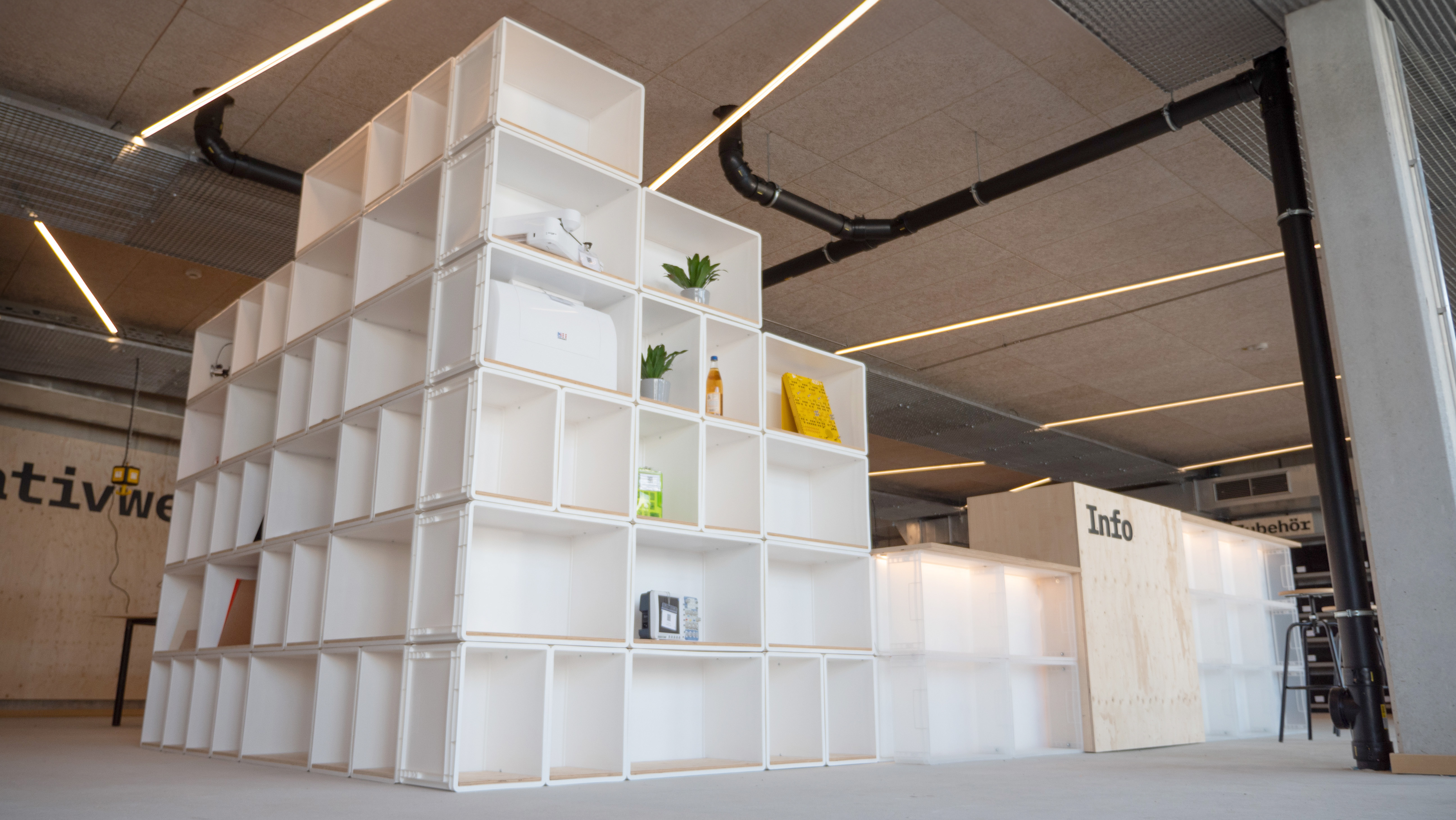A classic element in front of buildings with international mandates is a circle of flags. The countries’ flags symbolize togetherness and community. At the same time, however, the single flag is a national symbol, which is often used to demonstrate claims of possession or to create a distinction.
The artwork we created in collaboration with Felix Weinold for the new UN Campus in Bonn is a reinterpretation of the classic flag-circle, but with the means to deconstruct and re-compose the content to create a common identity in which the colors and boundaries no longer play an essential role.
This is done in a number of ways: the flag poles do not stand in line, but protrude at different angles; The flags are also not assigned to individual masts, but form a ring. This seamless ring of flags is horizontally divided into parts which can be rotated independent of each other, so that flag graphics of different countries can combine and mix with one another. Depending on the degree of offset between the rings, the original flags are still legible, or they are transformed into a free pattern that points to their derivation only through the combination of strong basic colors and parts of emblems and symbols.
The position of the sculpture over the path that leads through the park to the new building makes it an ideal meeting point. At the same time, the sculpture forms a gate that one passes through to cross the park. The movement of the flag rings is triggered via sensors, and the rings are set in motion according to a free algorithm. By bringing people together in this space, the rigid boundaries of nations are thus symbolically dissolved.
The result is a striking installation at a central point of the park with a direct connection to the new building, which takes up the symbolism of internationality on the one hand, but on the other hand playfully challenges it. Due to the strong color and kinetic aspects, the work provides a lively accent. The installation conveys the invitation to overcome boundaries and to create a real community.
Developed in cooperation with Felix Weinold










